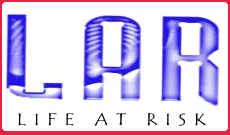Body Language
Amongst human beings, body language accounts for
a large part of meaningful non-vocal
communication. The way we sit, stand, gesture, or
behave as part of a group often aides in other
people's judgements about our thoughts, feelings
and intentions. Among bears, body language is the
primary mode of communication.
If you were out on a walk in a densely populated
Kodiak bears area and happend to enter an area in
which there is a bear present, there would
definetly be an exchange of communication. Not of
vocal communication directly, but of the bear's
body language and gestures, which usually
interprets the bear's current state of mind, or
mood. The following is a few of the well known
actions that bears exhibit when they sense a
human in their presence.
Bears
that are usually unconcerned about the presence
of humans:
Continue with normal activities
Maintain course of travel
Continue fishing or other feeding
Continue nursing of cubs
Continue resting
A
bear that is nervous of the presence of humans in
its area:
Discontinue or alter normal
activities
Move off trail
Break into a run
Rear on hind legs to look and smell
Pace and look around
A
bear that becomes somewhat upset with human
presence:
Walk stiff-legged
Walk away slowly with its head lowered
Moan or growl
A
bear that is angry of the presence of humans:
Pop jaws
Salivate
Bounce on front legs
Slap brush or nearby objets
Bluff charge
Even though these actions seem to make it look as
if bears are predictable, they are in real life
quite unpredictable. At one moment a bear can
ignore humans, then within a short lapse of time
it charges at the humans. This unpredictability
adds to the mystique and danger of encountering
bears. Whenever you go into what is considered
'bear country,' make sure that a properly trained
guide is with you as this list is not a 100%
guarantee of what the bear will do.
|

![]()